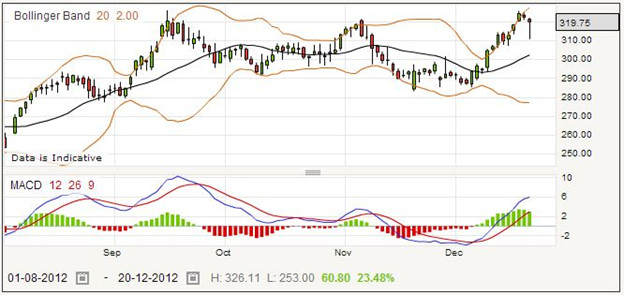Intermediate Capital Group is headquartered in London and provides what is called mezzanine finance. The daily price chart below shows that there is good volatility for spread betting and other financial trading.

The Group was founded in 1989 and came to the London Stock Exchange in 1994. It primarily specializes in mezzanine finance, though it also has a fund of funds division. Mezzanine finance can be regarded as risky, but in return it results in good returns on investment.
In technical terms, mezzanine finance is a subordinated debt, a claim on a company’s assets which is only slightly better than ordinary shares, and falls behind other claims for debt from other sources of finance. It is basically an unsecured loan. Mezzanine finance is usually private funding, often used by smaller companies which may not qualify for other types of loan, and as mentioned above it is usual to expect a better return on investment than for a secured debt.
However this return on investment can be made in various ways, such as some payment in kind with shares or warrants, rather than demanding full cash interest. This is to avoid burdening the company borrowing the money with the full cost, which in itself might cause the company to fail.
As you can imagine, this type of finance requires a great deal of expertise, but can be lucrative. Intermediate Capital Group has been fortunate to make placements during the credit crunch, and reportedly has about €8 billion under management.
The daily price chart shown above has many up and down trends, and few sideways trading spells, which means that a spread better will either be making or losing money, and not simply sitting there and waiting for something to happen. The Bollinger Bands, as is typical, showed narrowing before a major move in most cases.
Intermediate Capital Rolling Daily: How to Spread Bet on Intermediate Capital Shares?
The shares of Intermediate Capital Group seem to be going up and down all the time, and you must be careful to examine and analyze the technical indicators to see which prove most reliable for indicating the direction of your bet. Suppose you believe that the price will be going down, you may be tempted to place a short bet for, say, £12 per point. The current rolling daily price is 319.6 – 321.2.
If your bet turns out to be correct, you may choose to close your trade and collect your winnings when the quote goes down to 290.94 – 292.54. The bet opened at the selling price of 319.6, and you closed it at the buying price of 292.54. That means you gained 319.6-292.54 points, which is 27.06 points. With a stake of £12 per point, the total profit works out to £324.72.
On the other hand, if after placing your bet the price went up, you might decide to cut your losses when it reached 336.8 – 338.4. This time the closing price would be 338.4. If you ever get confused about which price to use, just remember that it is the price that causes you the least gain or the most loss on your bet. This is simply because the money generated from the spread goes to the spread betting provider for his services.
This time, your bet was placed at 319.6, and it closed at 338.4. That means that you have lost 18.8 points. Multiplying this by your stake of £12, that amounts to £225.55 lost.
To save keeping a constant watch on the market, many spread traders use a stop loss order. In this case a stop loss order might have closed your losing trade earlier, when the quote was 328.2 – 329.8. Taking the opening price of 319.6 away from the closing price of 329.8, you would have lost 10.2 points, which amounts to a loss of £122.40 for your size of wager.
Intermediate Capital Group Quarterly Futures Style Bet
For this example, suppose you have decided to place a long bet on Intermediate Capital Group using the far quarter futures spreadbet, as you think it may take a few weeks or months to see a profit. The quote for the far quarter bet is 320.81 – 324.68. Perhaps you would stake £7.50 per point.
As an example, suppose the price goes up to 363.8 – 367.67, and you decide to close the bet and collect your winnings. The opening price for your bet was 324.68, and the closing price will be 363.8. Taking 324.68 away from 363.8, your point gain works out to 39.12. With a stake of £7.50 per point, your winnings are £293.40.
You must also consider the other possibility, which is the price goes down after you place your spread bet and you have to close your bet and accept your losses. Say the price goes down to 303.61 – 307.48, and you end the trade. This time the opening price is 324.68 and the closing price is 303.61. 324.68 minus 303.61 is 21.07 points. Your stake is £7.50 per point, so 21.07 times £7.50, which is £158.03, is the amount you lost on the trade.
Because it saves you watching the market all the time, you would do well to consider placing a stop loss order each time you take out a spread trade. In this case, the stop loss order might have closed your bet for you when the price went down to 312.21 – 316.08. The price you get from a stop loss order is not guaranteed, unless you specifically ask for it and accept a larger spread, but usually your bet will be closed at a price close to the one you select. The starting price for your bet was 324.68, and it was closed for you by your spread betting provider at 312.21. That means that you have lost 12.47 points. Multiplying by £7.50, the loss using a stop loss order would have been £93.53.